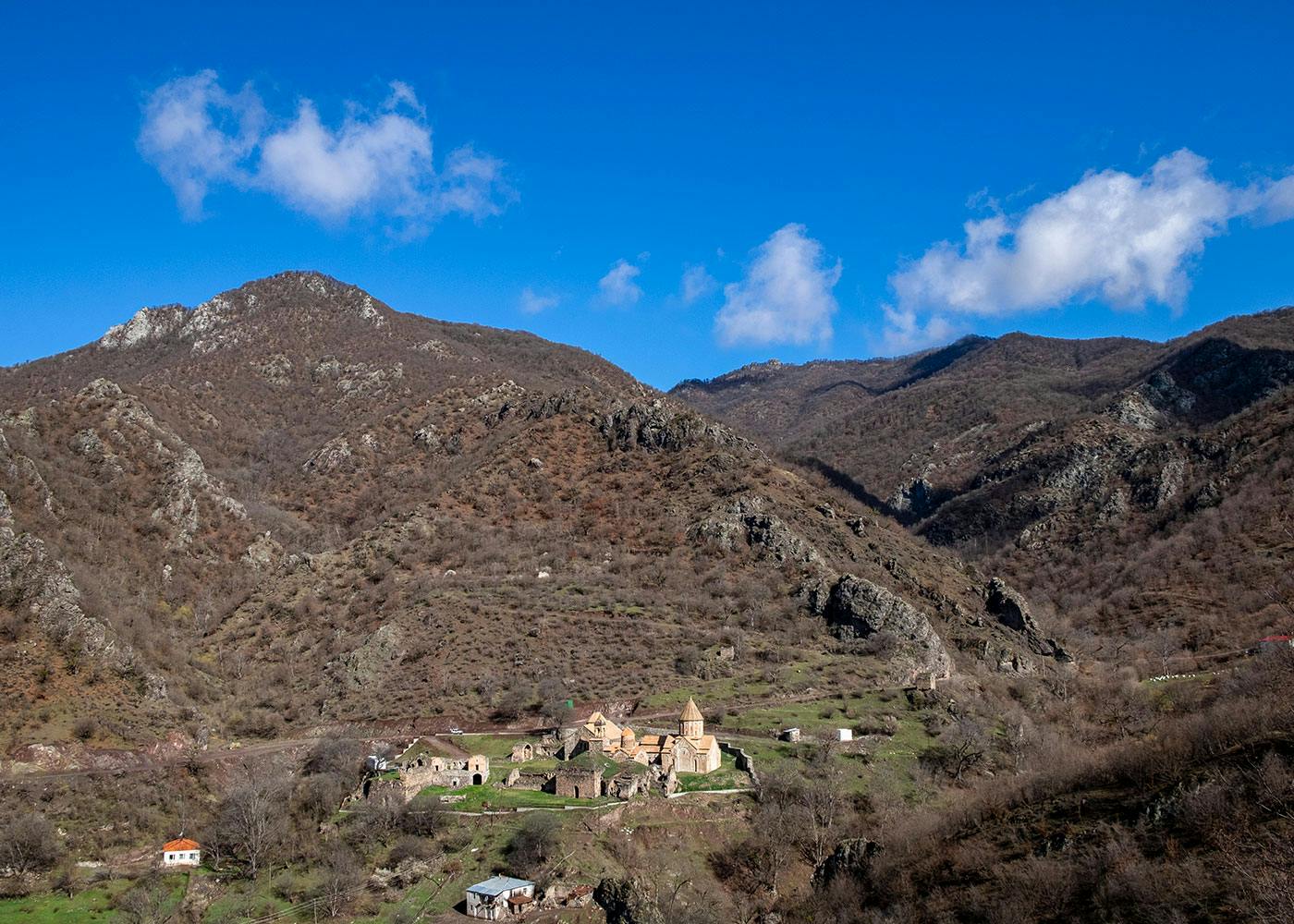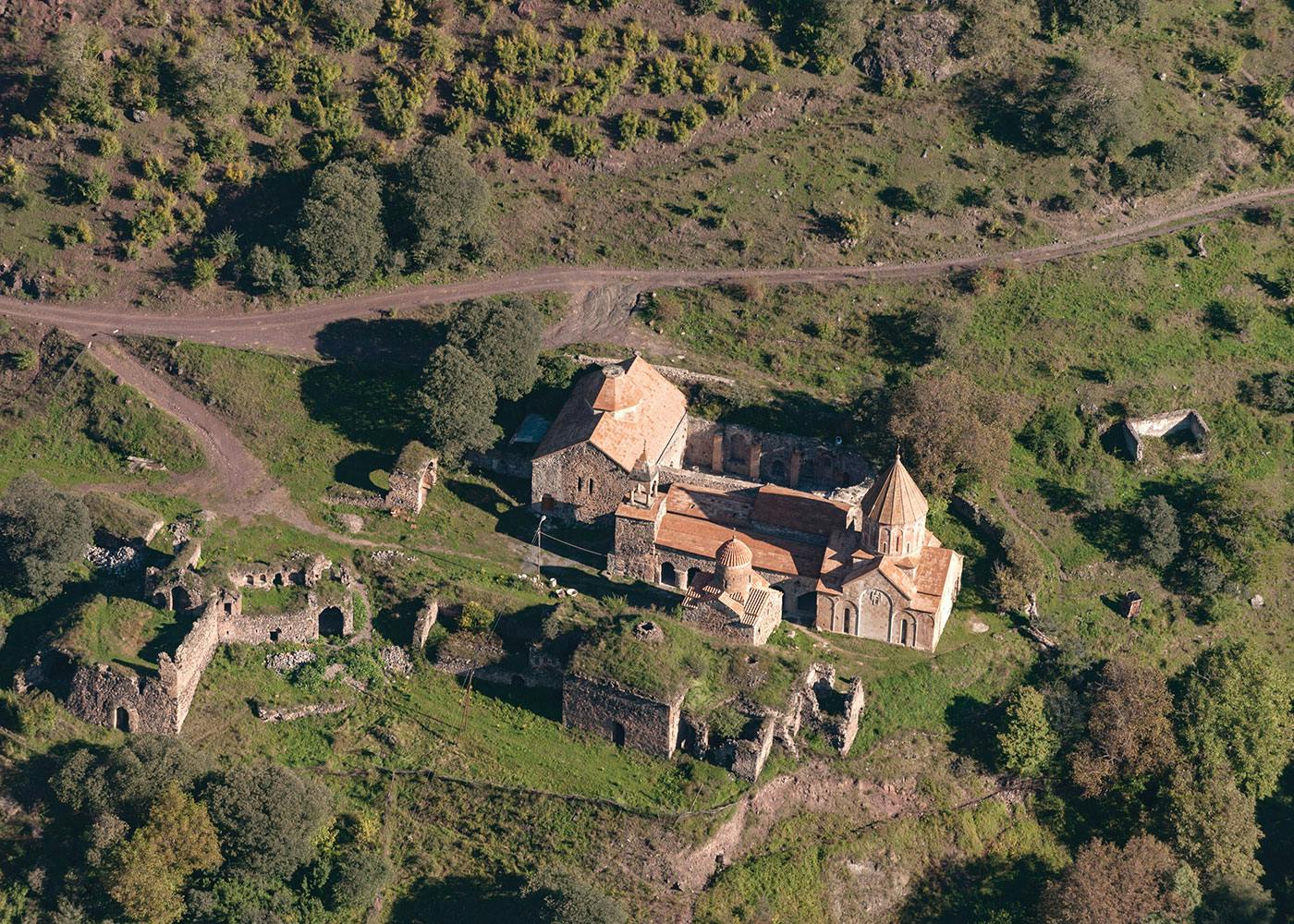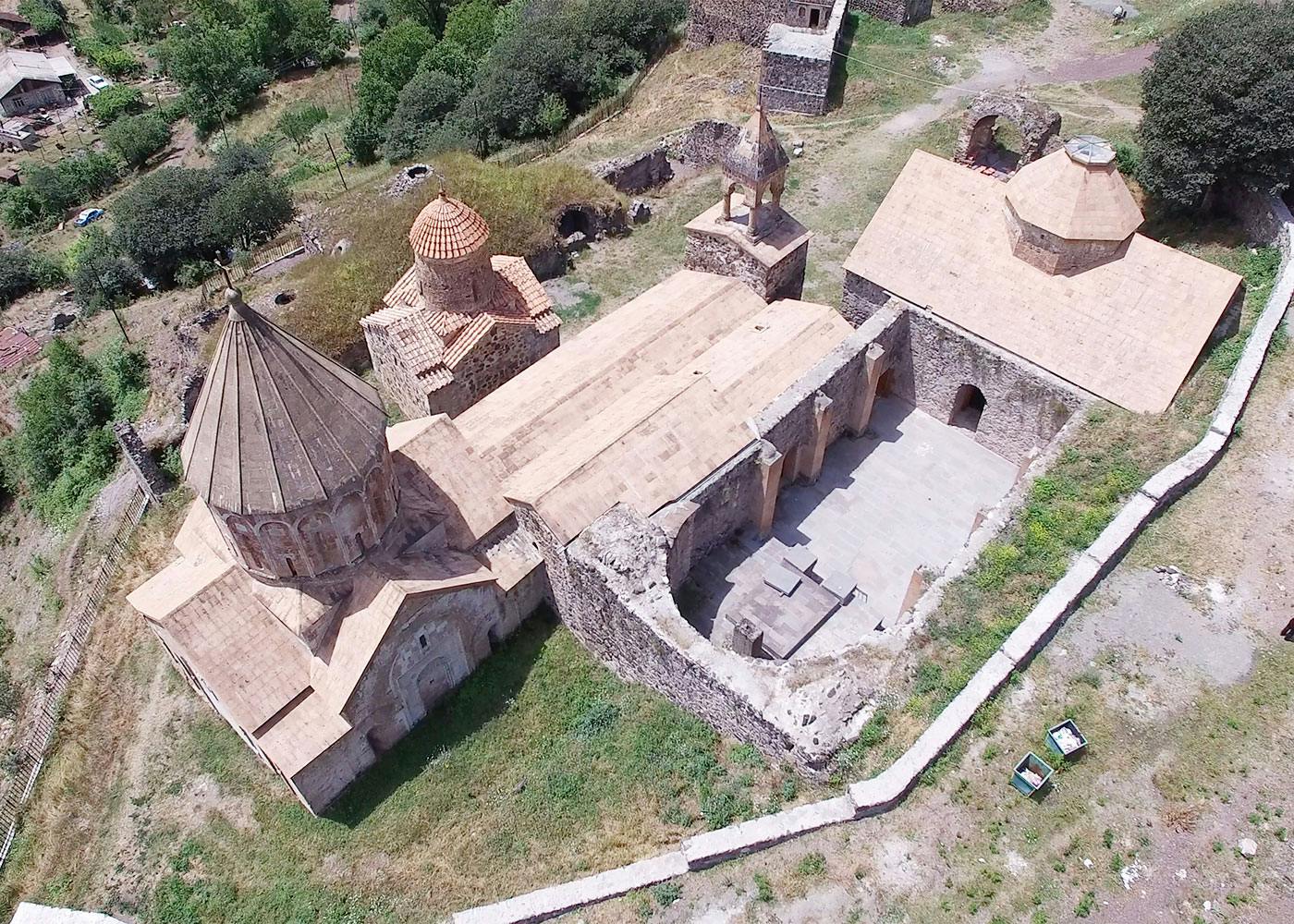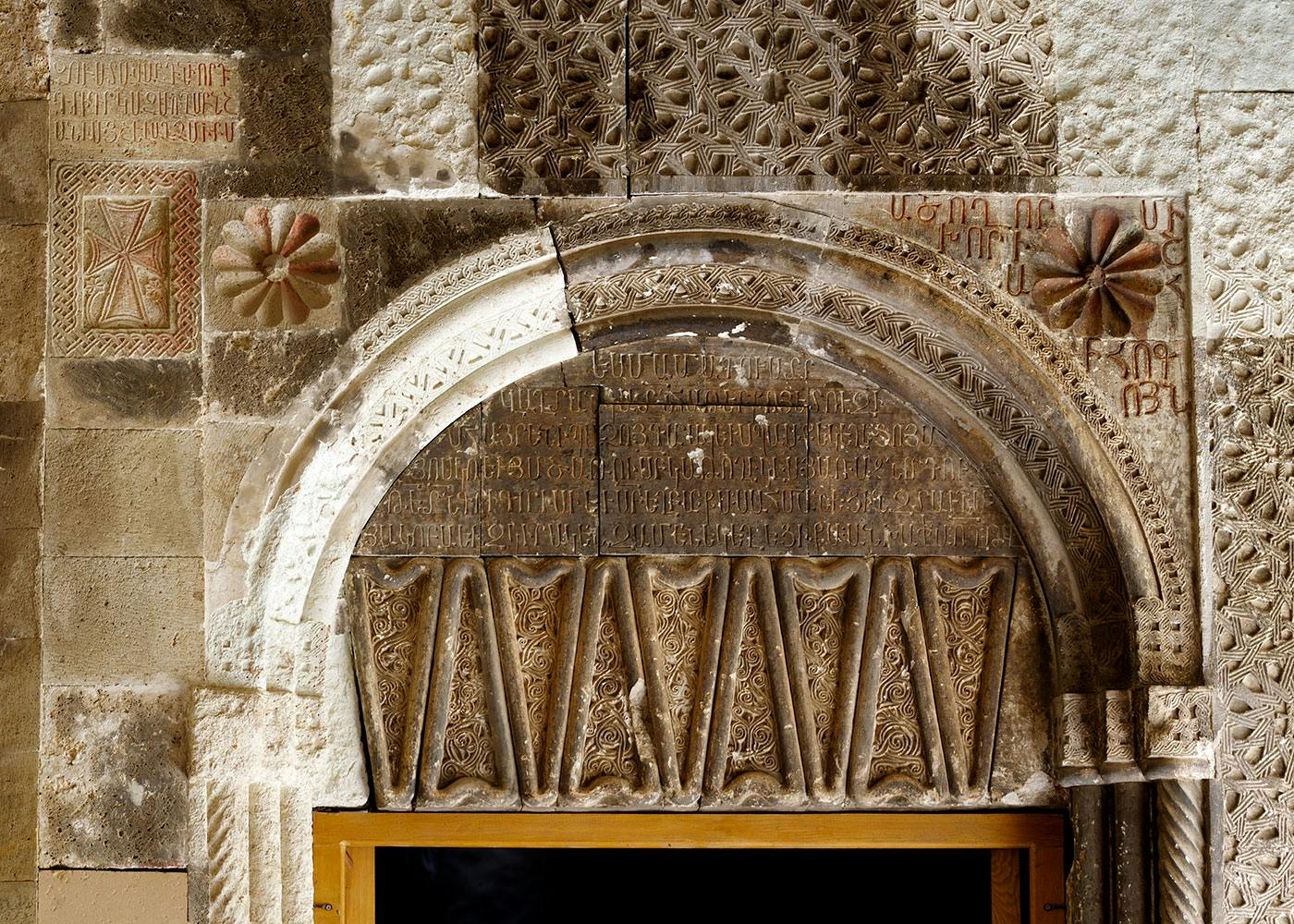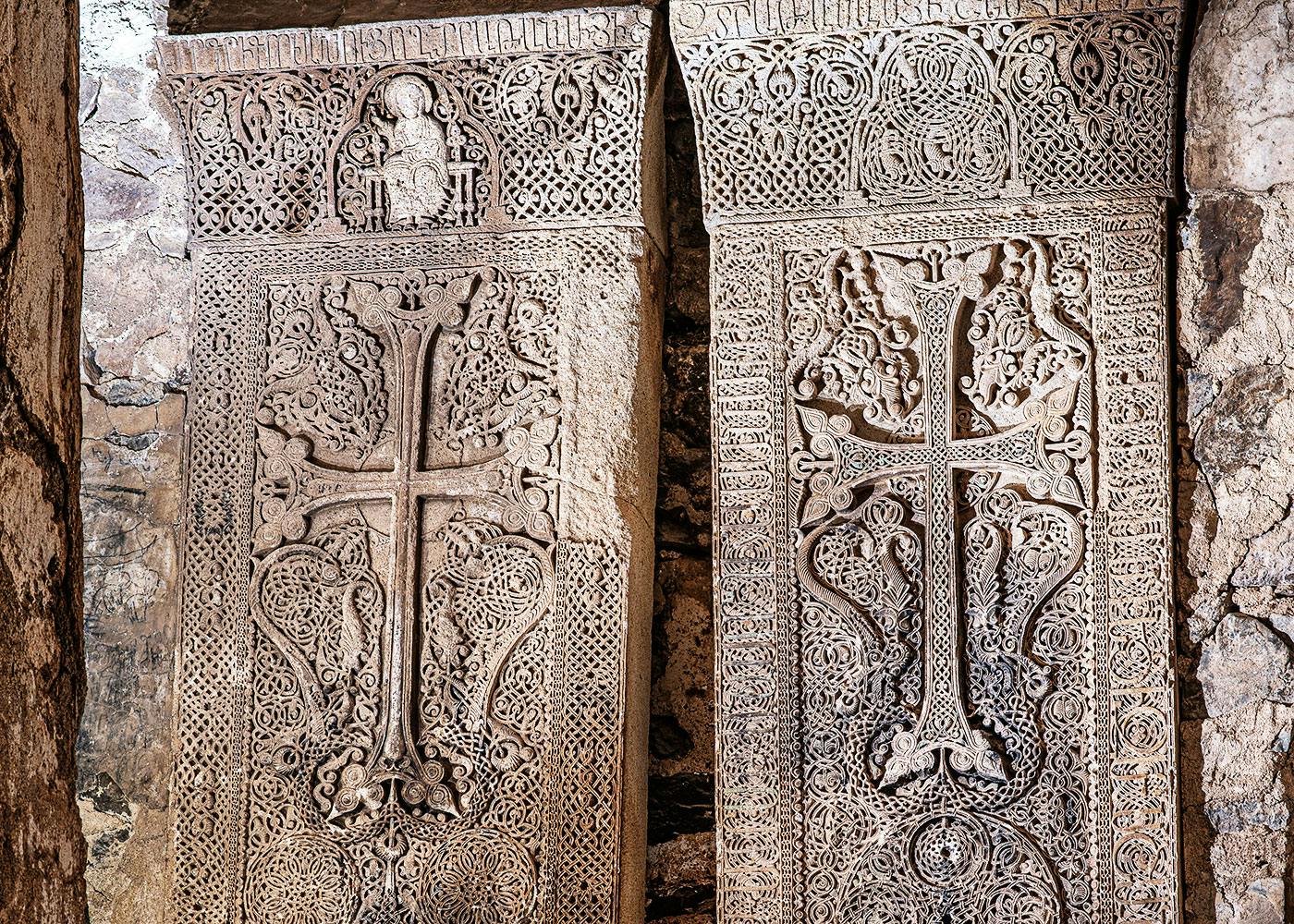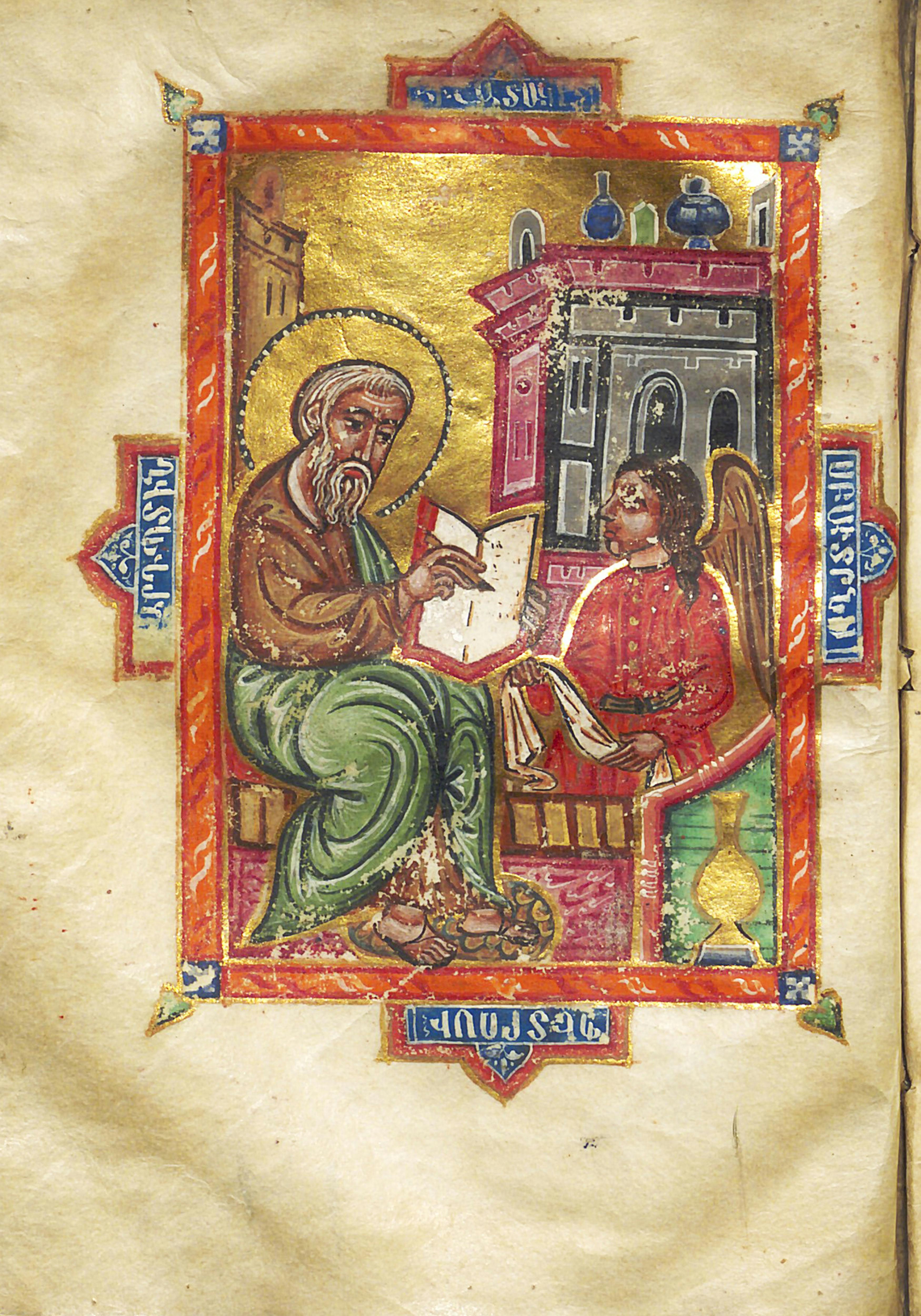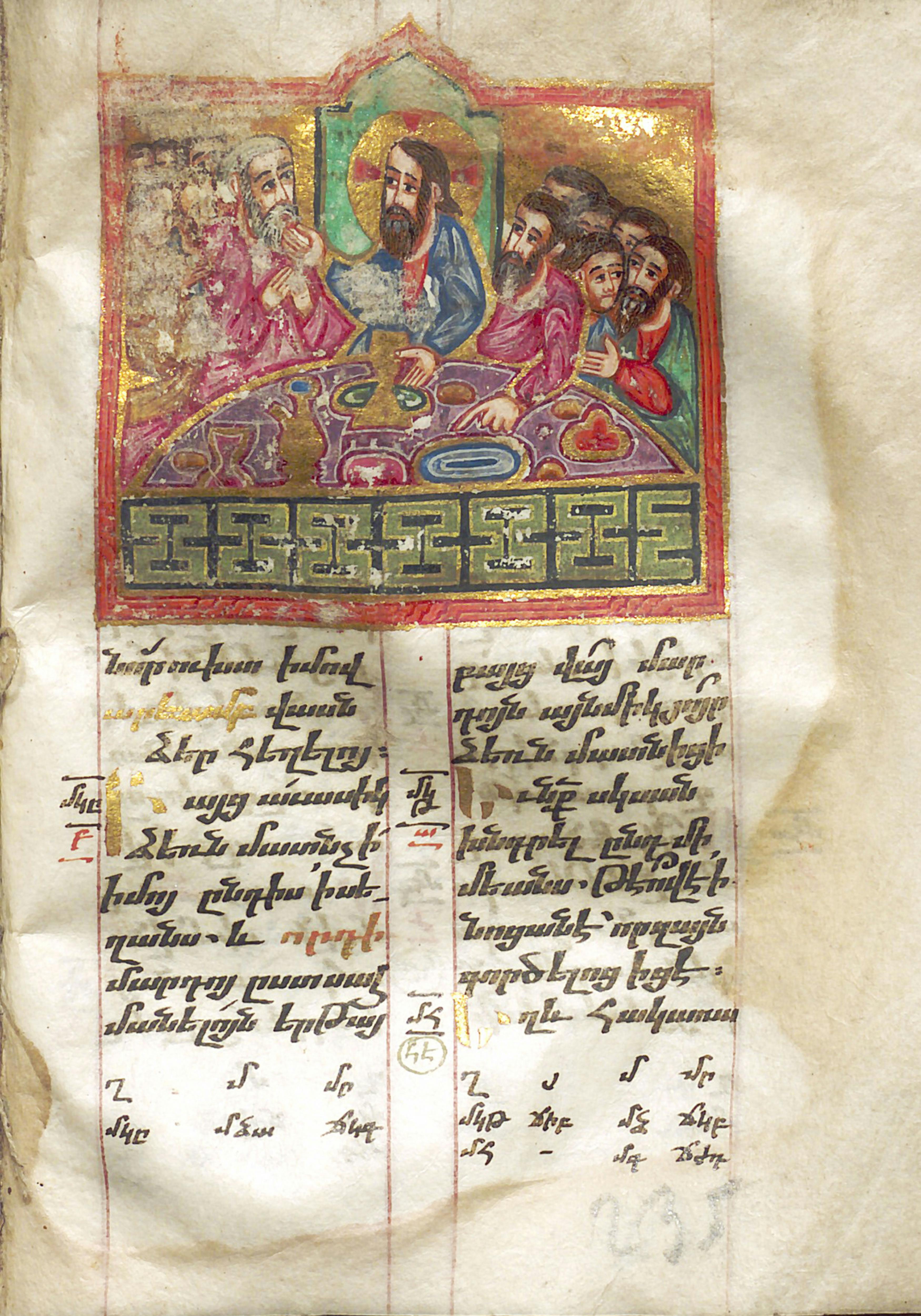Dadivank, or Khutavank (literally, the monastery on the hill), is one of the most famous historical, spiritual, and cultural landmarks of the region. It is located in the east of the historical Upper Khachen, or Tzar, province, believed to be one of the first places in this part of the world where Christianity was adopted.
The church itself is believed to have been founded at the end of the first century on top of the burial site of Saint Dadi, one of the 70 disciples of the apostle Thaddeus (traditionally one of the two first evangelists to Armenia).[1]
Above: Listen to a group of teenage students from Karabakh share their innovative work, producing 3D-images of Dadivank monastery at the Tumo Center for Creative Technologies.
Left: Monastery and surroundings from the south
Right: Aerial view looking north
In the medieval period, Dadivank was a famous center of literary production.[2] The site consists of ten buildings in all, making it one of the largest known monastic complexes in medieval Armenia.[3] The various constructions at the site, dating to the fifth, thirteenth, and eighteenth centuries, are not only important as examples of medieval architecture, but also for the preservation of over 100 Armenian inscriptions, as well as bas-relief sculpture and frescoes.[4]
The main cathedral is a domed hall, a typical form found across Armenian architecture from the seventh century. It is a strikingly handsome church, with delicate exterior arcades on the outside reminiscent of Ani Cathedral and other tenth–eleventh-century monuments. The drum, too, is decorated with slender arcades, pierced with eight windows, and supports a ribbed, conical roof. The monument is covered in engraved and painted inscriptions.
Left: Main church from the northeast
Right: Aerial view of the complex
This treasury of inscriptions, which have been carefully documented and studied by scholars,[5] share the history of the monastery and inform the aesthetic experience of the structure. Inscriptions also appear on the many khachkars that lie in and around the monastery. These inscriptions preserve precious information about people, places, and events, as well as powerful prayers for salvation.
The foundation inscription of the main Cathedral, engraved beneath the windows on the southern facade, dates its construction to 1214.[6] It tells the story of its patron, a local princess who was also a mourning widow and mother. An excerpt from the 19-line inscription reads in Armenian:
By the Grace of Almighty God Father and His Only Begotten Son Jesus Christ, And by the Grace of the Most Holy Spirit, I, Arzu Khatun, Humble Maid of the Christ . . . With Utmost Hope Built this Cathedral in the Place of the Last Rest of My Husband And My Sons . . . Hassan, Killed for Christian Faith in the Turkish War and in Three Months My Junior Son, Grigor . . .
They Passed to Christ, Leaving their Poor Mother in Inconsolable Mourning. But While They Were Alive They Vowed to Build a Church . . . in This Place, And Didn’t Manage Because Death Came to Them Faster. They Bequeathed to Me to Implement By All Means the Testament of Their Hearts And I Undertook The Construction of this Expiatory with Utmost Hope and Diligence for the Salvation of the Souls . . .
While Worshipping in this Holy Altar, Remember My Prayers Inscribed in this Church.
Two khachkars within the bell tower, one of them dated to 1283, are particularly famous for their fine ornamentation. They are tall and elegant and feature typical Armenian crosses with leaf ornamentation, carved medallions, and curved cornices. The left hand also features an enthroned Christ at the center of the cornice. These two khachkars are extraordinary for their finely worked stone surfaces and the complexity of their designs.
Left: Main church, southern wall, view of restored frescoes
Right: Main church, northern wall, view of restored frescoes
Left: Main church, western portal, detail of carving
Right: Khachkars inside bell tower, detail
Dadivank is also famous for its wall paintings, which were first recorded in 1911. The south wall preserves the largest figural scene, showing the Virgin and Christ flanking Saint Nicholas, who appears at the center, his arms outstretched to receive the gifts of a Gospel book and an omophorion.[7] An angel appears between the Virgin and Nicholas. This is an extraordinary image of immense sensitivity and a deep knowledge of Byzantine painting styles. The paintings, which date from the thirteenth century, are accompanied by painted inscriptions in Armenian.[8]
During the Soviet period the monastery of Dadivank was abandoned.[9] In 1993 it came back into use as a Christian place of worship.
Left: "Matthew the Evangelist," Bible, year 1671. Originally produced in Dadivank. Painter: Barsegh (Matenadaran Manuscript 7232, page 14b).
Right: "The Last Supper," Bible, year 1671. Originally produced in Dadivank. Painter: Barsegh (Matenadaran Manuscript 7232, page 235a).
